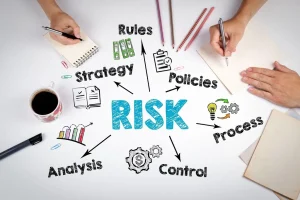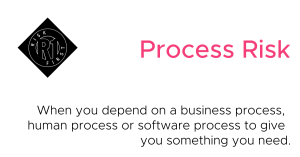
Types of business risks. Every business is exposed to risks that could affect its performance and, ultimately, whether it succeeds or fails. Nevertheless, not every business is impacted by the same kinds of business risks, even those that are shared by all businesses. Executives must therefore understand not only the risks a company takes, but also the likelihood that those risks may cause problems and the possible impacts they may have on the company’s operations.
TYPES OF BUSINESS RISKS
Business risks include strategic (decisions), operational (processes), financial (money), compliance (laws), and reputational (image) risks, all of which are managed through processes like identification, analysis, and mitigation. Business risk is the possibility that a company will experience lower profits or losses due to various internal or external factors, threatening its ability to meet financial goals.
1. Strategic;

Concerns that can compromise an organization’s capacity to carry out its strategic plans and accomplish its commercial objectives are referred to as strategic risks. This kind of risk also pertains to variables that could weaken an organization’s competitive advantages in the market, whether they are caused by internal or external sources.
The organization’s ability to successfully launch new products and services, navigate business or market change, the organization’s resilience in the face of adversity, and the competence and stability of the senior executive and business management teams are all factors to take into account when managing strategic risk.
2. Operational;

types of business risks
Operational risk is another broad category of risk that includes anything that could impair an organization’s capacity to manage its business operations successfully and profitably, according to Emily Frolick, U.S. leader of KPMG’s Trusted Imperative risk management program and advisory partner at the professional services firm. The processes, procedures, policies, people, and systems that a business has put in place are all part of managing operational risk and making sure they can withstand unfavorable circumstances.
3. Process;

types of business risks
Process risk is usually mentioned as a different form of risk, even if it’s occasionally included in the operational risk category. It particularly pertains to how effective, efficient, and resilient the different business processes are that underpin an organization’s operations, ranging from digital workflows and supply chain operations to basic internal processes. If not, a company must determine how to reduce the risks that could arise from the process gaps and evaluate the potential downstream effects.
4. Financial;

types of business risks
Every firm faces financial risk, which includes business variables that could have an impact on balance sheets, cash flow, profitability, and even an organization’s solvency. “Not that your stock price goes down,” according to Roselund, is financial risk. He clarified that a company’s stock performance is a result of its ability to manage its financial risk as well as other forms of business risk, and can be either good or negative. Click here for more updates.
Summary
These risks can be classified as Strategic (bad decisions), Operational (internal failures), Financial (cash flow, credit), Compliance/Legal (laws, regulations), and Reputational (brand image). Risks can also be caused by external factors like competition, political unrest, and changes in the economy. These risks, which might result from internal or external events, pose a threat to earnings.